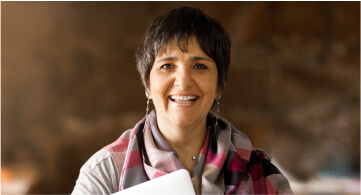PLEASE REVIEW THE INFORMATION BELOW
Image Characteristic for Mirror and Lens
A spherical mirror is a reflective surface that can be concave or convex.
Making the analogy with a spoon, the reflective surface of a concave mirror (spoon) “holds” the water and the reflective surface of a convex mirror (spoon) doesn’t “hold” the water.
1. Find out the image characteristics for mirrors:
Use the link below to start the simulation for spherical mirrors.
CC point is the center of curvature for the mirror,
R
A mirror has one focus point. Focal distance
f
=R/2
do distance object
di distance image
ho height of the object
hi height of the image
Concave mirror do > 2f (object far away from the mirror).
Record the values of di and hi including their signs and underline 3 of the image characteristics.
The image is real or virtual, inverted or upright, smaller or larger.
Is the image in front or behind the mirror?
do = 13 cm di = ……….cm
ho = 2 cm hi = ………..cm
Concave mirror do < f (object very close to the mirror)
Record the values of di and hi including their signs and underline 3 of the image characteristics.
The image is real or virtual, inverted or upright, smaller or larger
Is the image in front or behind the mirror?
do = 2 cm di = ……….. cm
ho = 2 cm hi = ………..cm
A typical concave mirror is a make-up mirror or a dentist mirror. How do you see yourself in a make-up mirror considering you are very close to it?
Convex mirror do > 2f (object far away from the mirror). Please move the object on right side of the mirror (right side of the screen).
The image is real or virtual, inverted or upright, smaller or larger
Is the image in front or behind the mirror?
do = 12 cm di = ……….. cm
ho = 2 cm hi = ………..cm
A typical convex mirror are the rear side mirrors of the cars. How is the image of the car behind you when you are checking the side mirrors of your car?
2. Find out the image characteristics for lenses.
Lenses can be concave or convex.
Convex lenses are thick in the middle and thin at the edges and concave lenses are thin in the middle and thick at the edges.
Use the link below to start the simulation for lenses.
Click Here
A lens has a Focus point in front of it and a symmetrical one behind it.
do distance object
di distance image
ho height of the object
hi height of the image
Convex lens do > 2 f (object far away from the lens)
Record the values of di and hi including their signs and underline 3 of the image characteristics.
The image is real or virtual, inverted or upright, smaller or larger
Is the image in front or behind the lens?
do = 12 cm di = ………..cm
ho = 2 cm hi = ………..cm
Convex lens do < f (object very close to the lens)
do = 3 cm di = ………..cm
ho = 1cm hi = ………..cm
The image is real or virtual, inverted or upright, smaller or larger
Is the image in front or behind the lens?
Concave lens do > 2 f (object far away from the lens)
Record the values of di and hi including their signs and underline 3 of the image characteristics.
The image is real or virtual, inverted or upright, smaller or larger
Is the image in front or behind the lens?
do = 12 cm di = ………..cm
ho = 2 cm hi = ………..cm
What type of lens has the human eye?







